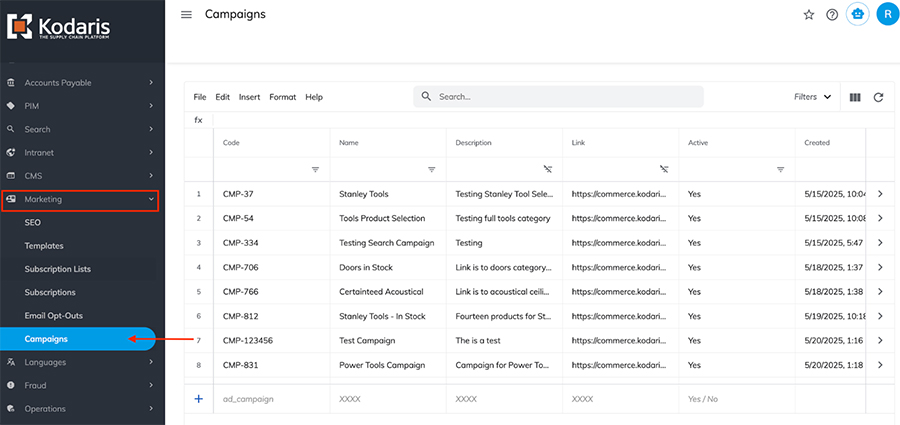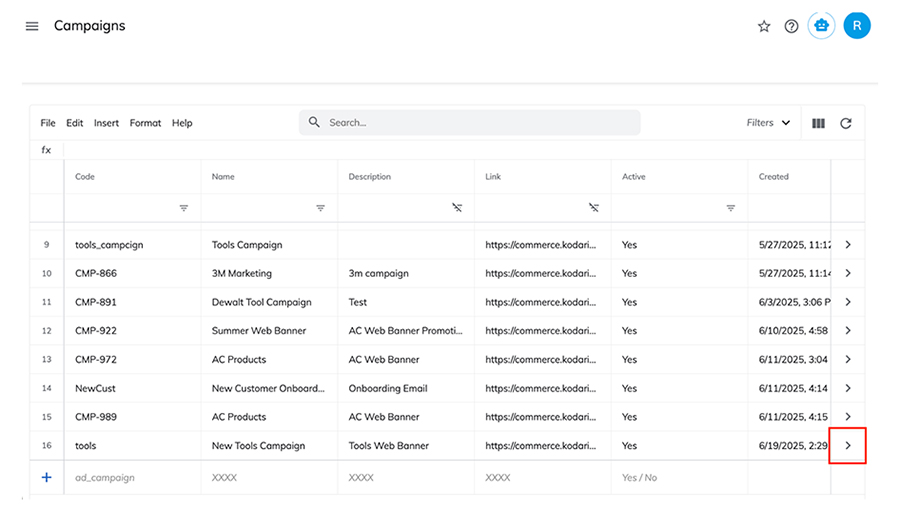In the Kodaris Operations Portal, you can create Campaigns that seamlessly connect your marketing activities with measurable results. Each Campaign generates a unique URL that tracks a user's journey on your website from the moment they click the link.
With this captured data, dashboards in AWS Quicksight deliver valuable insights and sales metrics directly attributed to your campaigns. This streamlined approach eliminates the need for manual data processing, and a simplified way to evaluate your marketing initiatives.
The Campaigns screen can be found under Marketing in the left hand navigation. You’ll notice the page is set up in a grid so that you can quickly access and search for campaigns you have created.

Campaigns can be created using the grid or on your commerce site. In later documentation we will cover how to create campaigns using both methods.
Additionally, you can view more details for a campaign. To do this, click on the arrow on the far right-hand side of the screen on the campaign row you wish to view.

Each campaign contains the following key items:

Within the Campaign details, navigating to the items tab will show a list of products, customers, or companies associated with the campaign.

The campaign link is the "entry point" for tracking, meaning everything the user does after landing on the site from that link will be tracked.
When creating a campaign, the code entered will be used to create the unique URL. The end of all campaign links include trk=code. Ensuring this remains on the link is essential for capturing data and later pulling insights from AWS Quicksight. In the example below, the code entered was tools, so the link ends in trk=tools.

There are multiple types of campaigns that can be created in Kodaris. These can be created by importing a list or entering the items manually. Campaign types include:
Campaign links can be used in any marketing activity that utilizes a link to direct users to the website. Here are a few ideas:
Campaign analytics can be found in AWS Quicksight. Standard dashboards are available, or they can also be tailored to your KPI needs. The dashboards include both summary data as well as detailed product and customer insights. Examples of the data points available include:
Even if you have multiple sites, AWS Quicksight analysis can be pulled from one location. This is because the key identifier is the code and not the data URL.
It is important to note that the revenue data shown is based on the sales amount when the order is placed on your commerce site. It does not reflect any changes made in your ERP after the fact.